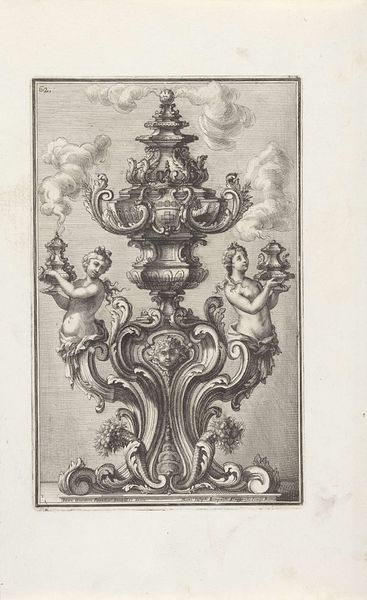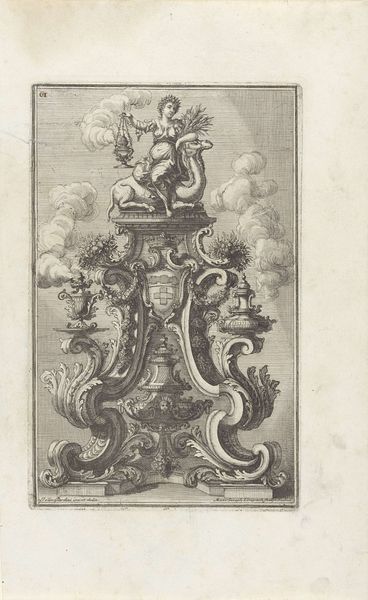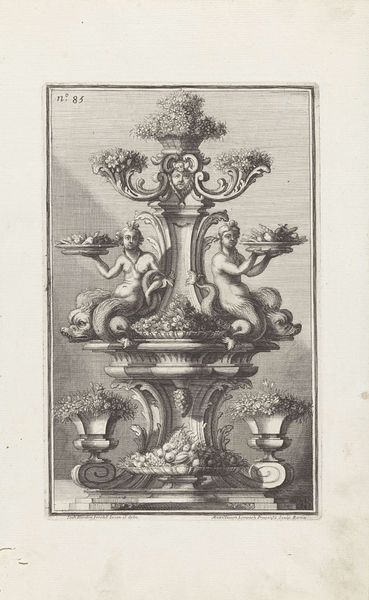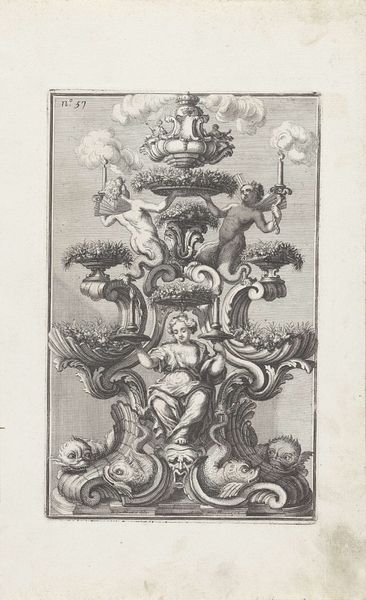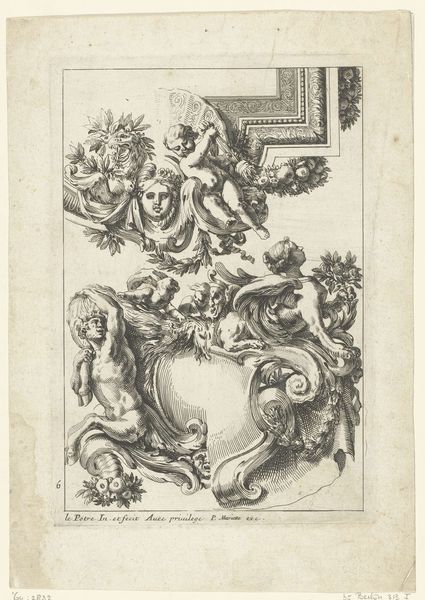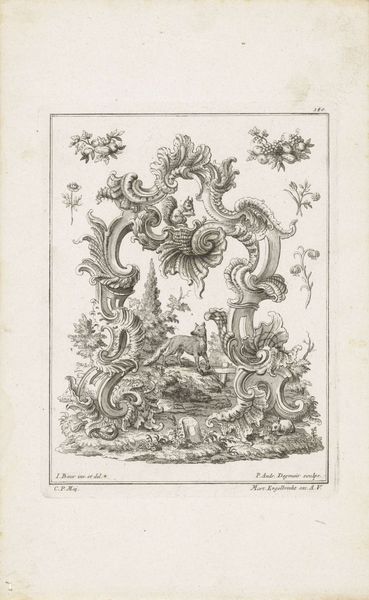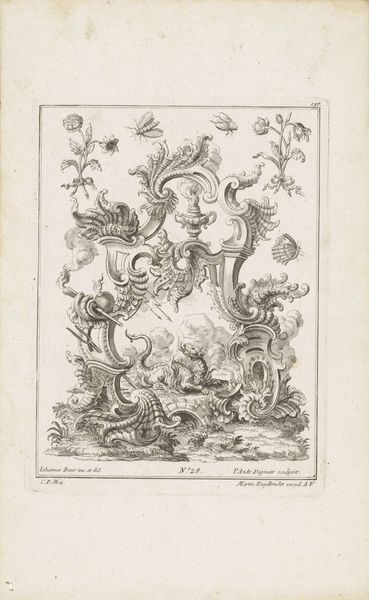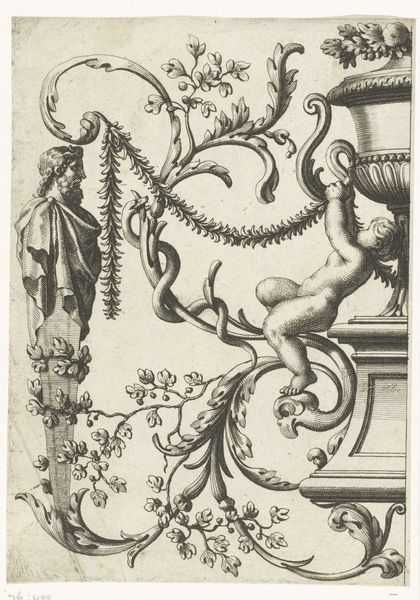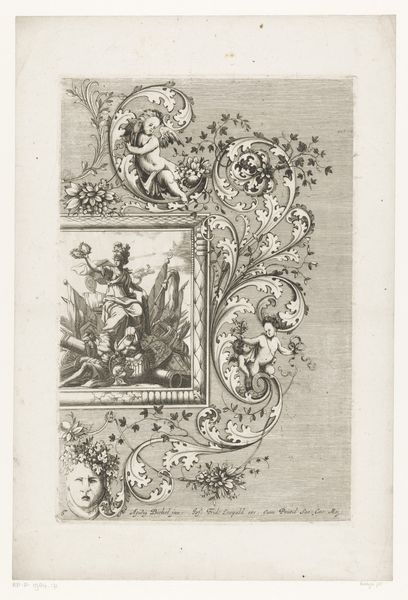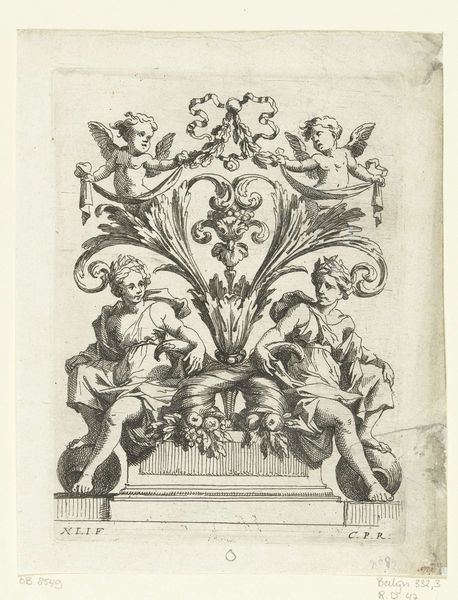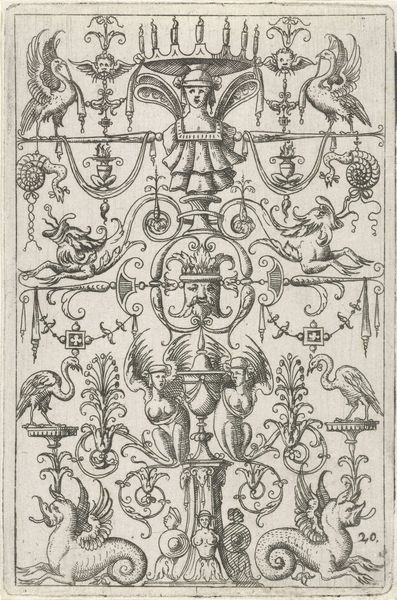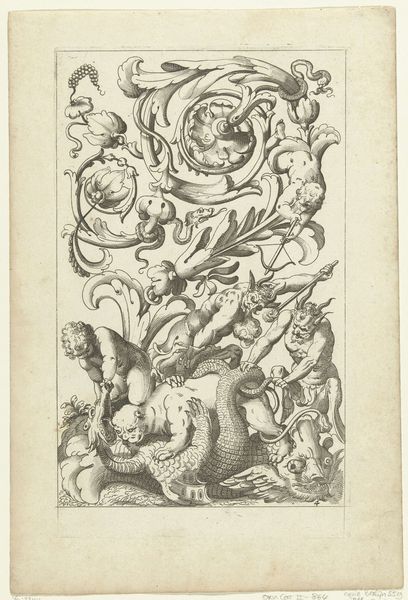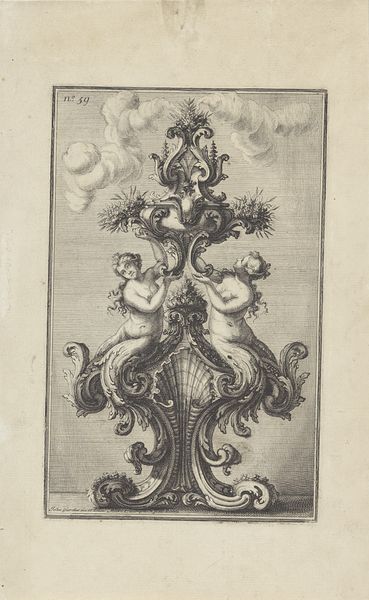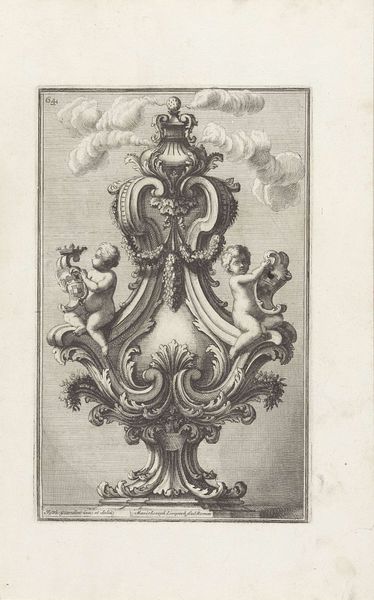
Kandelaar met gevleugelde tritons, putti, leeuwen en adelaars 1714
0:00
0:00
metal, sculpture, engraving
#
baroque
#
metal
#
figuration
#
sculpture
#
decorative-art
#
engraving
Dimensions: height 280 mm, width 189 mm
Copyright: Rijks Museum: Open Domain
Curator: The opulence here is quite striking. The work, rendered around 1714, is an engraving by Maximilian Joseph Limpach entitled "Candelabrum with Winged Tritons, Putti, Lions, and Eagles." Editor: A feast for the eyes! There’s almost an overwhelming sense of dynamism. The artist is not afraid of ornateness! Curator: The composition teems with symbolic density, particularly within the heraldic framework common to Baroque design. Note how the figures of the tritons and putti surmount more earthbound, powerful lion and eagle motifs, a celebration of control over nature and worldly power. Editor: Yes, one is drawn to that pronounced verticality of elements: lions morph into eagles, becoming putti and tritons supporting lights... a clear hierarchy. And such crispness in the lines given the complexity of the interwoven forms. Curator: The artist, Limpach, reflects in his craft the prevailing Baroque fascination with dramatic interplay. The careful interplay of shadow and light helps to articulate each component with notable clarity. Consider the symbolism too - light emerging through struggle... a dominant theme of the age. Editor: This era also relished extravagant displays of wealth and control. The fact this ornate object is disseminated as a design showcases something broader - it acts as propaganda celebrating the lifestyle of the wealthy, spreading visual aspirations to a wide audience via printmaking. Curator: Precisely, but more than that, I would say this engraving’s aesthetic prowess in structuring so many figures symmetrically draws one's eye through carefully laid forms that elevate what it truly seeks to convey as a symbolic celebration of power structures! Editor: I find myself focusing less on its inherent beauty and more on what this kind of highly decorative and meticulously executed imagery meant to a society defined by inequalities of status and a growing wealthy merchant class hungry for validation. The print serves as more than pure ornament. Curator: Fair enough! It reminds us how crucial context remains, shaping production and interpreting its influence across audiences through diverse frameworks like philosophy and art theory. Editor: It is an image which demands contemplation of history, status and taste and the public’s engagement within that paradigm.
Comments
No comments
Be the first to comment and join the conversation on the ultimate creative platform.
